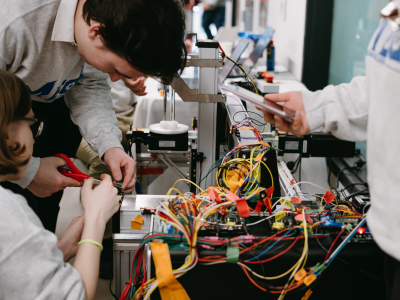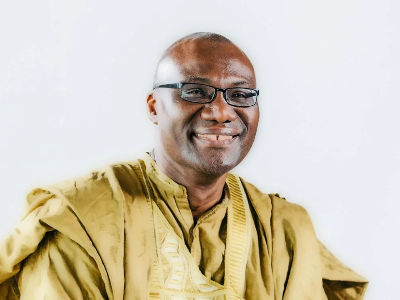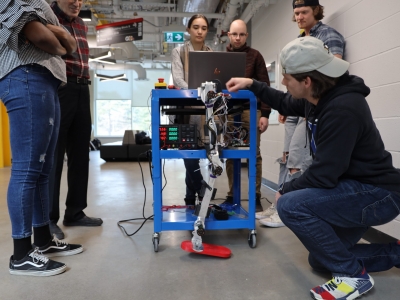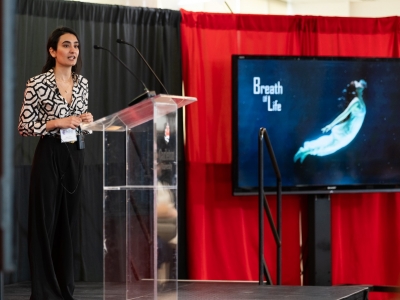
After obtaining his Bachelor of Industrial Design in 2019, Ruzbeh Irani continued his studies at Carleton in the Master of Design program.
Ruzbeh Irani still remembers his first encounter with industrial design.
He was in Grade 11 and living in Toronto at the time. He and his father were building his room a closet and needed to install a stainless-steel bracket to the hinge—a slow-release latch that kept the door from slamming.
“Who thinks up these cool little mechanisms?” he asked his father, who said “designers.”
When he was looking online for post-secondary options, Irani came across Carleton’s industrial design program and that little closet bracket came to mind.
“I’ve always been interested in how things are manufactured,” he says. “I’ve watched How It’s Made since I was very young. I love engineering and I also love art, and I found that industrial design was the bridge between both.”
Irani went on to complete a Bachelor of Industrial Design (BID) with a specialization in industrial and product design in 2019. He loved learning to communicate his thoughts through sketching and to develop prototypes with 3D printers and in metal or wood shops on Carleton’s campus.
“Because industrial design is dealing with product design and industry, you can get into anything,” says Irani. “We got a taste of designing helmets, faucets, even forks. My final fourth-year project was a modular water distillation machine, so you can get exposure to a variety of product industries.”
His love for the program grew because of its interdisciplinary nature. It didn’t just focus on product design but also on physics, economics and psychology. This urged him to continue in the master’s of industrial design (MID) program to expand his knowledge in design research.
He worked with Prof. Chantal Trudel as a Biometric & Human Factors Design Researcher. Together with a team of graduate students, they researched the design of electronic payment terminals for Employment and Social Development Canada to be more accessible for people with disabilities.
He completed the MID in 2022 and soon joined IBM Consulting as an Associate Designer of experiential and mobile design solutions. He works on a variety of different projects at the 111-year-old company, and he says every day is a new, refreshing challenge. His current project takes a service design approach to develop a custom-made client relationship management system.
“Everyone at IBM is always open to helping,” he says. “IBMers have a growth mindset, so when problems occur, people are always motivated to help and break beyond the barriers.”
His studies prepared him for his career in a few ways. The BID taught Irani to take a high-level view of the entire design process—from first sketch to final manufactured products—with an emphasis on understanding the end user. The master’s program brought in effective interdisciplinary design research, to allow him to solve wicked problems that require finding solutions through different lenses.
“Coming from high school, your umbrella of knowledge is limited,” says Irani, “and then coming out of the program four years later, you know exactly how to prototype, build and manufacture a water bottle, a desk, a keyboard or even an entire experience. That’s cool. Now I can actually make something which can impact our future.”
By: Joseph Mathieu
Wednesday, September 21, 2022 in Accessibility, Alumni, Capstone Design Projects, Experiential Learning, Graduate Studies, Industrial Design, Undergraduate
Share: Twitter, Facebook



